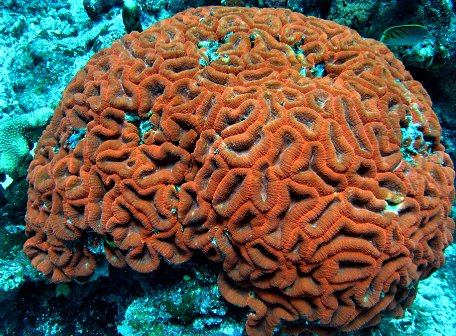
The best practice estimates regarding the timing of return to high levels of physical activity in sports after concussion keeps changing in recent years. The study below suggests that early return to exercise type, non-contact sports practice may be beneficial after concussion. The best protocol then might be early reintegration into non-contact practice but only later restart of physical contact practice and games after concussion in sports, at least at the junior high and high school levels, contingent at least until further study is done.
ABSTRACT
===========================================================
Association Between Early Participation in Physical Activity Following Acute Concussion and Persistent Postconcussive Symptoms in Children and Adolescents
Anne M. Grool, MD, PhD1; Mary Aglipay, MSc1; Franco Momoli, PhD1; et al William P. Meehan III, MD2; Stephen B. Freedman, MDCM, MSc3; Keith Owen Yeates, PhD4; Jocelyn Gravel, MD5; Isabelle Gagnon, PhD6; Kathy Boutis, MD7; Willem Meeuwisse, MD, PhD8; Nick Barrowman, PhD1; Andrée-Anne Ledoux, PhD1; Martin H. Osmond, MDCM9; Roger Zemek, MD9; for the Pediatric Emergency Research Canada (PERC) Concussion Team
JAMA. 2016;316(23):2504-2514. doi:10.1001/jama.2016.17396
Key Points
Question
Is participation in physical activity within 7 days following acute concussion associated with lower rates of persistent postconcussive symptoms in children and adolescents compared with conservative rest?
Findings
In this prospective, multicenter cohort study of 3063 children and adolescents aged 5.00 to 17.99 years after propensity matching, the proportion with postconcussive symptoms at 28 days was 28.7% with participation in early physical activity vs 40.1% with conservative rest, a significant difference.
Meaning
Participation in physical activity within 1 week after injury may benefit symptom recovery following acute concussion in children and adolescents.
---------------------
Importance
Although concussion treatment guidelines advocate rest in the immediate postinjury period until symptoms resolve, no clear evidence has determined that avoiding physical activity expedites recovery.
Objective
To investigate the association between participation in physical activity within 7 days postinjury and incidence of persistent postconcussive symptoms (PPCS).
Design, Setting, and Participants
Prospective, multicenter cohort study (August 2013-June 2015) of 3063 children and adolescents aged 5.00-17.99 years with acute concussion from 9 Pediatric Emergency Research Canada network emergency departments (EDs).
Exposures
Early physical activity participation within 7 days postinjury.
Main Outcomes and Measures
Physical activity participation and postconcussive symptom severity were rated using standardized questionnaires in the ED and at days 7 and 28 postinjury. PPCS (≥3 new or worsening symptoms on the Post-Concussion Symptom Inventory) was assessed at 28 days postenrollment. Early physical activity and PPCS relationships were examined by unadjusted analysis, 1:1 propensity score matching, and inverse probability of treatment weighting (IPTW). Sensitivity analyses examined patients (≥3 symptoms) at day 7.
Results
Among 2413 participants who completed the primary outcome and exposure, (mean [SD] age, 11.77 [3.35] years; 1205 [39.3%] females), PPCS at 28 days occurred in 733 (30.4%); 1677 (69.5%) participated in early physical activity including light aerobic exercise (n = 795 [32.9%]), sport-specific exercise (n = 214 [8.9%]), noncontact drills (n = 143 [5.9%]), full-contact practice (n = 106 [4.4%]), or full competition (n = 419 [17.4%]), whereas 736 (30.5%) had no physical activity. On unadjusted analysis, early physical activity participants had lower risk of PPCS than those with no physical activity (24.6% vs 43.5%; Absolute risk difference [ARD], 18.9% [95% CI,14.7%-23.0%]). Early physical activity was associated with lower PPCS risk on propensity score matching (n = 1108 [28.7% for early physical activity vs 40.1% for no physical activity]; ARD, 11.4% [95% CI, 5.8%-16.9%]) and on inverse probability of treatment weighting analysis (n = 2099; relative risk [RR], 0.74 [95% CI, 0.65-0.84]; ARD, 9.7% [95% CI, 5.7%-13.7%]). Among only patients symptomatic at day 7 (n = 803) compared with those who reported no physical activity (n = 584; PPCS, 52.9%), PPCS rates were lower for participants of light aerobic activity (n = 494 [46.4%]; ARD, 6.5% [95% CI, 5.7%-12.5%]), moderate activity (n = 176 [38.6%]; ARD, 14.3% [95% CI, 5.9%-22.2%]), and full-contact activity (n = 133 [36.1%]; ARD, 16.8% [95% CI, 7.5%-25.5%]). No significant group difference was observed on propensity-matched analysis of this subgroup (n = 776 [47.2% vs 51.5%]; ARD, 4.4% [95% CI, −2.6% to 11.3%]).
Conclusions and Relevance
Among participants aged 5 to 18 years with acute concussion, physical activity within 7 days of acute injury compared with no physical activity was associated with reduced risk of PPCS at 28 days. A well-designed randomized clinical trial is needed to determine the benefits of early physical activity following concussion.








